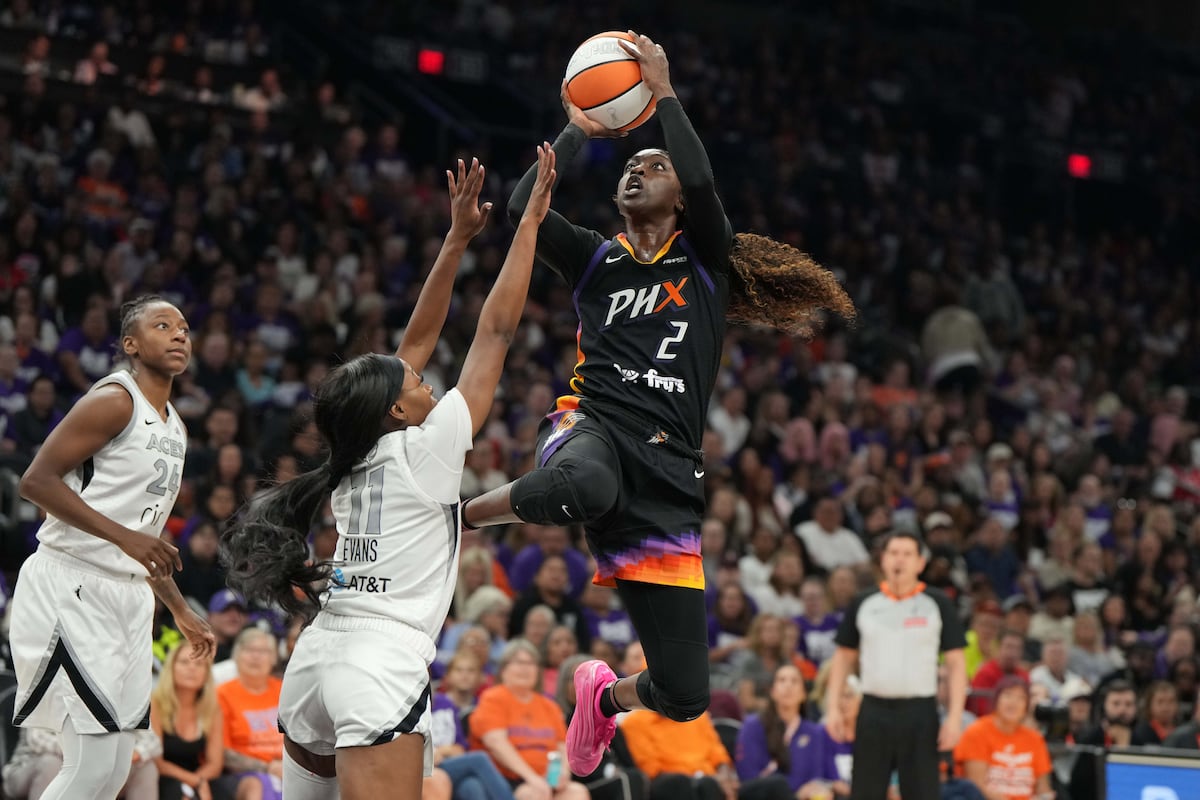The WNBA has just handed the crown to Nevada’s Las Vegas Aces after another season of record numbers in the arenas and the biggest audiences for the WNBA Finals since the founding of the league in 1997. But in spite of the success of Las Vegas Aces, which has bagged three rings in four seasons, and the confirmation of its star American center A’ja Wilson as a generational great contributing largely to the Aces’ third WNBA win in four years, there is conflict in the air over the players’ conditions and pay.
The deadline for the new Collective Bargaining Agreement negotiations is the end of October, and if an agreement is not reached, there could be a lockout at a time of great interest in professional women’s basketball in the U.S. – next year there will be two new franchises and by 2030, there is expected to be 18 teams compared to the current 13. The main stumbling block in the negotiations, of course, is money. Currently, the maximum salary in the WNBA is $250,000, while in the men’s NBA it is 200 times higher. It should be pointed out that the WNBA players are not asking for the same amount as men; they simply want to get paid the same percentage of shared revenue, as first vice president of the WNBPA players’ association and a member of the Los Angeles Sparks, Kelsey Plum points out.
“We have the capacity to influence, a common goal and unity, especially on the salary issue. We’re not where we’d like to be,” Plum has said. “The players have been up to the task, with brilliant performances in the competition, with great rivalries, and now it is the league’s turn to take a step in our favor,” she added.
The WNBA players’ demands concerning revenue sharing implies equivalent contracts to their NBA counterparts. In the NBA, a large part of each player’s salary is linked to basketball-related income (BRI) across the board, including ticket sales, television rights and merchandise. Last year the WNBA recorded a 48% increase in attendance at games, a 170% increase in audiences – with an average of 1.2 million viewers – and a 600% increase in merchandise sales.
By contract, NBA players earn nearly 50% of the BRI, while WNBA players aren’t even guaranteed any income from that source in their contract. Unofficial calculations suggest that what they earned between 2021 and 2025 from that source has fallen from 11 percent to seven percent – surprising given the women’s competition doubled its turnover in the same period.
Other issues that the players are fighting over are the inclusion of private flights in their contract – they now enjoy them under a temporary two-year concession – as well as greater security in issues such as maternity leave and an improvement in the refereeing establishment, which has been a source of controversy this season.
In recent weeks, the negotiations have taken a personal turn. Minnesota Lynx star Napheesa Collier accused WNBA commissioner Cathy Engelbert of being responsible for the league’s poor treatment of its players. “Our leadership’s ability to being held accountable is to suppress everyone’s voices by handing out fines. I’m not concerned about a fine. I’m concerned about the future of our sport,” explained the Minnesota Lynx forward, who is the Women’s National Basketball Players Association vice president and founder of a new women’s competition, Unrivaled.
To illustrate her displeasure, Collier accused Engelbert of dismissing the fact that the salaries of some of the league’s biggest stars, including Cailtin Clark, Angel Reese and Paige Bueckers, were so modest in a private conversation in which Engelbert told her that players should be “on their knees thanking their lucky stars for the media rights deal that I got them.”
She also said, “Caitlin [Clark] should be grateful she makes $16 million off the court because without the platform that the WNBA gives her, she wouldn’t make anything.” Englebert denied making the comments and said she was “disheartened” by the animosity towards her. “I am disheartened by how Napheesa characterized our conversations and league leadership, but even when our perspectives differ, my commitment to the players and to this work will not waver,” she told The New York Times. Still, she was booed by the Phoenix fans during the presentation of the trophy to the new champions.
Since Collier’s outburst, the vast majority of stars and players in the competition have backed a change of direction within the WNBA’s leadership. Adam Silver, commissioner of an NBA that still owns 42% of its women’s division, acknowledged that there must be changes within the league. “There’s no question that the WNBA is going through growing pains and it’s unfortunate that it’s coming just as their most important games and their Finals are on right now. There’s relationship issues as well. I’m confident we can fix those over time,” Silver said prior to the WNBA Finals.
With the Aces now victorious, all parties will have to roll up their sleeves if they want to save the game before the bargaining agreement deadline.
Sign up for our weekly newsletter to get more English-language news coverage from EL PAÍS USA Edition

